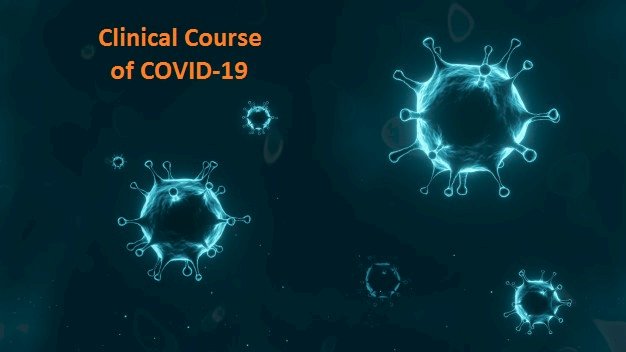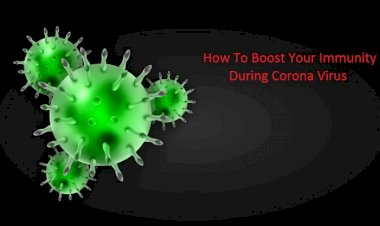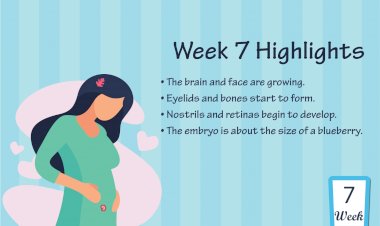Clinical Course Of COVID-19

Coronavirus Disease 2019/COVID-19/SARS-CoV-2/2019-nCoV
Coronavirus disease 2019 is defined as illness occurred by a novel Coronavirus now called severe acute respiratory syndrome coronavirus 2 (SARS-CoV-2), which was first identified in Wuhan city, Hubei Province, China. It was first reported on December 31, 2019. On January 30, 2020, the WHO declared the COVID-19 as a global health emergency and then on March 11, 2020 it was declared as global pandemic by the WHO. It’s first such designation since declaring H1N1 influenza a pandemic in 2009.
The Health Ministry has confirmed 4,067 confirmed cases and 109 deaths in India till 07 April 2020. This new virus seems to be very contagious and has quickly spread all around world. Currently on 7 April, 2020 there have been 1,214,971 confirmed cases of COVID-19, including 67840 deaths reported to the WHO.
Etiology:
Corona virus is positive stranded RNA virus with a crown-like appearance under an electron microscope (corona is a Latin term for crown) due to glycoprotein spikes on it’s envelope. The subfamily Orthocoronavirinae of the Coronaviridae family (order Nidovirales) classifies into four genera of CoVs: Alphacoronavirus (alphaCoV), Betacoronavirus (betaCoV), Deltacoronavirus (deltaCoV), and Gammacoronavirus (gammaCoV). Furthermore, the betaCoV genus divides into five sub-genera or lineages. Genomic characterization has shown that probably bats and rodents are the gene sources of alphaCoVs and betaCoVs. On the contrary, avian species seem to represent the gene sources of deltaCoVs and gammaCoVs.
Electron microscopic Pictures of nCoV:
A- nCoV virus particles. B- nCoV particles within human airway epithelial cells.
Thus, SARS-CoV-2 belongs to the betaCoVs category. It is round or elliptic and often pleomorphic form, and a diameter of approximately 60–140 nm. Like other CoVs, it is sensitive to ultraviolet rays and heat. Furthermore, these viruses can be effectively inactivated by lipid solvents including ether (75%), ethanol, chlorine-containing disinfectant, peroxyacetic acid and chloroform except for chlorhexidine.
Transmission:
The first case of COVID-19 was linked to direct exposure to the Hunan seafood market of Wuhan, the animal to human transmission was presumed but further cases were not associated with this mechanism. Therefore it was concluded that virus could also be transmitted by human to human, and symptomatic people are most frequent source of COVID-19 spread. Moreover there are suggestions that individuals who remain asymptomatic could also transmit the virus. This data suggest that isolation is the best way to control this epidemic.
It must be emphasized that this information is the result of the first reports. Thus, further studies are needed to understand the mechanisms of transmission, the incubation times and the clinical course, and the duration of infectivity.
Clinical presentation
Incubation period
The incubation period of coronavirus disease is 2-14 days, with a median duration of 4-5 days from exposure to appearance of symptoms. Till now study reported that 97% of infected persons will develop symptoms within 11 days.
Signs & Symptoms
Presentation of COVID-19 has ranged from asymptomatic to mild to severe illness and morality. Symptoms may develop from 2-14 days of exposure.
These signs and symptoms include respiratory manifestations ranging from mild cough, cold and fever to severe symptoms such as severe dyspnea and hypoxemia, renal impairment with reduced urine output, tachycardia, altered mental status, and functional alterations of organs expressed as laboratory data of hyperbilirubinemia, acidosis, high lactate, coagulopathy, and thrombocytopenia.
Common symptoms include:
Fever (83% to 99%)
Cough (59% to 82%)
Fatigue (44% to 70%)
Myalgia (11% to 35%)
Less common symptoms include:
Headache (8%)
Shortness of breathing (31% to 40%)
Sputum production (11% to 35%)
Anorexia (40% to 84%)
Diarrhea (3%)
Respiratory distress
The most common serious manifestation of COVID-19 appears to be pneumonia. An initial report of infected persons in Wuhan, china noticed that clinical finding was fever, followed by cough and myalagia/fatigue. Headache, sputum production and diarrhea were less common. The clinical course was characterized by the development of dyspnea in 55% of patients and lymphopenia in 66%. All patients with pneumonia had abnormal lung imaging findings. Ground-glass opacites are common on CT scans.
Symptoms in children with infection appear to be uncommon, although some children with severe COVID-19 have been reported. Several studies have reported that the signs and symptoms of COVID-19 in children are similar to adults and are usually milder compared to adults.
Risk factor for severe COVID-19 includes the following:
- Older age
- Immune-compromised states
- Diabetes
- Cardiovascular disease
- Hypertension
- Chronic pulmonary disease
- Chronic renal failure
- Liver disease
- Malignancy
- Severe obesity
Complications:
- Mild to moderate (mild symptoms up to mild pneumonia)- 81%
- Severe (dyspnea, hypoxia, or >50% lung involvement on imaging)- 14%
- Critical (respiratory failure, shock, or multi organ dysfunction)- 5%
In this study all deaths occurred with critical illness and the overall case fatality rate was 2.3%. The fatal cases were primarily elderly patients and had an underlying medical condition.
Laboratory and imaging finding:
In the early stage of the disease, a normal or decreased total white blood cell count and a decreased lymphocyte count can be demonstrated. Lymphopenia appears to be a negative prognostic factor. Increased values of liver enzymes, LDH, muscle enzymes, and C-reactive protein can be found. There is a normal procalcitonin value. In critical patients, D-dimer value is increased, blood lymphocytes decreased persistently, and laboratory alterations of multiorgan imbalance (high amylase, coagulation disorders, etc.) are found.
Chest imaging includes chest radiograph, CT scan, or lung ultrasound demonstrating bilateral opacities (lung infiltrates > 50%), not fully explained by effusions, lobar, or lung collapse. Although in some cases, the clinical scenario and ventilator data could be suggestive for pulmonary edema, the primary respiratory origin of the edema is proven after the exclusion of cardiac failure or other causes such as fluid overload. Echocardiography can be helpful for this purpose.
Diagnosis:
Most of countries are collecting some epidemiological and clinical information to decide who should have tested for COVID-19. This includes anyone who had close contact with a patient with laboratory confirmed COVID-19 within 14 days of symptom onset or a history of travel from affected geographic areas within 14 days of symptom onset.
The WHO recommends collecting specimens from both the upper respiratory tract (naso- and oropharyngeal samples) and lower respiratory tract such as expectorated sputum, endotracheal aspirate, or bronchoalveolar lavage. The collected samples require storage at four degrees celsius. If the test result is positive, it is recommended that the test should be repeated for verification. In patients with confirmed COVID-19 diagnosis, the laboratory evaluation should be repeated to evaluate for viral clearance prior to being released from observation.
Differential diagnosis:
The symptoms of the early stages of the disease are nonspecific. Differential diagnosis should include the possibility of a wide range of infectious and non-infectious (e.g., vasculitis, dermatomyositis) common respiratory disorders.
- Adenovirus
- Influenza
- Human metapneumovirus (HmPV)
- Parainfluenza
- Respiratory syncytial virus (RSV)
- Rhinovirus (common cold)
For suspected cases, rapid antigen detection, and other investigations should be adopted for evaluating common respiratory pathogens and non-infectious conditions.
Treatment/Management:
There is no specific treatment recommended for COVID-19, and vaccine is currently not available. The treatment is symptomatic, and oxygen therapy represents the major treatment intervention for patients with severe infection. Mechanical ventilation may be necessary in cases of respiratory failure refractory to oxygen therapy, whereas hemodynamic support is essential for managing septic shock.
Among other therapeutic strategies, systemic corticosteroids for the treatment of viral pneumonia or acute respiratory distress syndrome (ARDS) are not recommended. Moreover, unselective or inappropriate administration of antibiotics should be avoided, although some centers recommend it. Although no antiviral treatments have been approved, several approaches have been proposed such as lopinavir/ritonavir (400/100 mg every 12 hours), chloroquine (500 mg every 12 hours), and hydroxychloroquine (200 mg every 12 hours). Alpha-interferon (e.g., 5 million units by aerosol inhalation twice per day) is also used.
Prevention:
The WHO and other organizations have issued the following general recommendations:
- Avoid close contact with subjects suffering from acute respiratory infections.
- Wash your hands frequently, especially after contact with infected people or their environment.
- Avoid unprotected contact with farm or wild animals.
- People with symptoms of acute airway infection should keep their distance, cover coughs or sneezes with disposable tissues or clothes and wash their hands.
- Strengthen, in particular, in emergency medicine departments, the application of strict hygiene measures for the prevention and control of infections.
- Individuals that are immune-compromised should avoid public gatherings.
The most important strategy for the populous to undertake is to frequently wash their hands and use portable hand sanitizer and avoid contact with their face and mouth after interacting with a possibly contaminated environment.








































Comments (0)